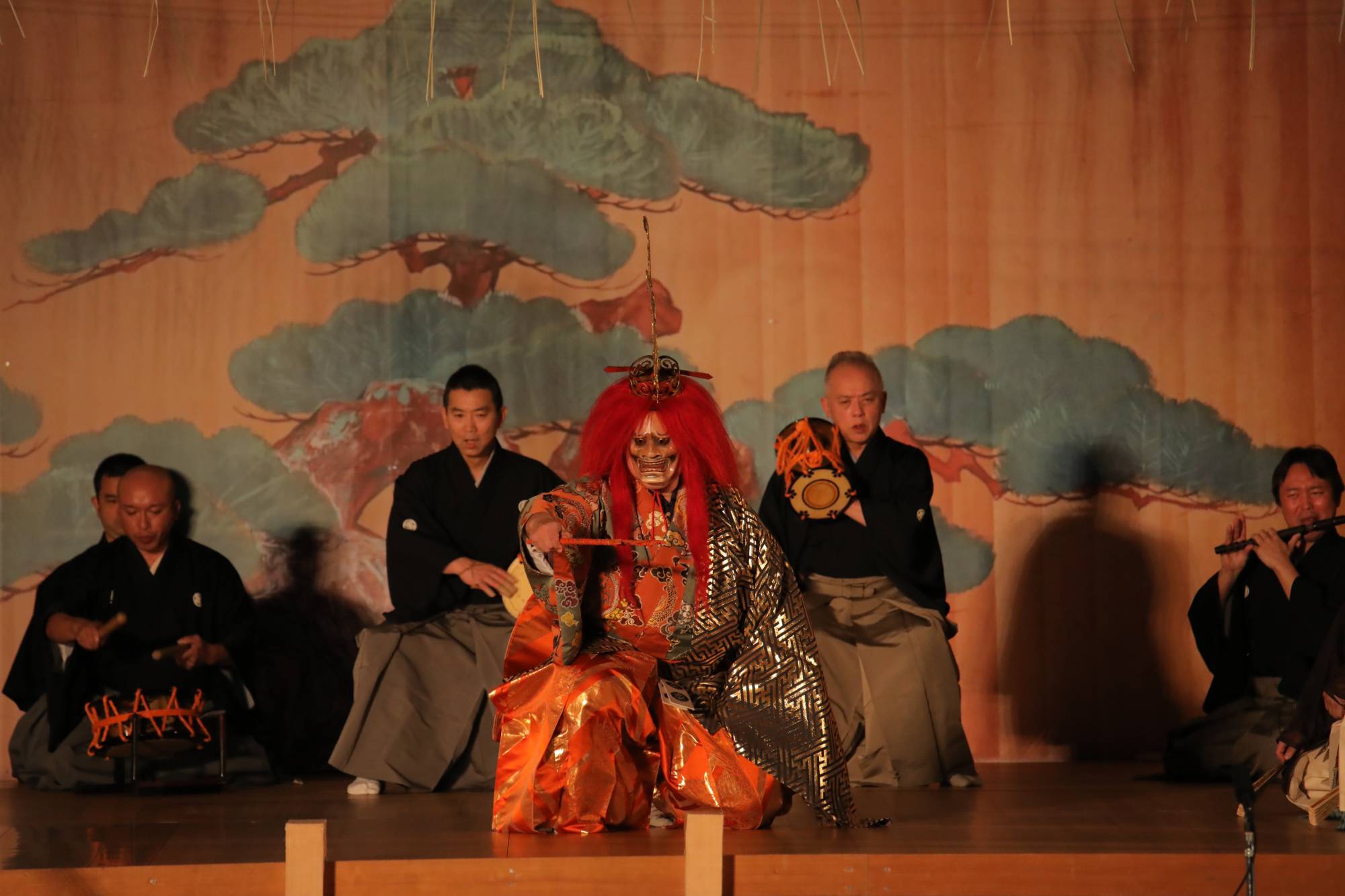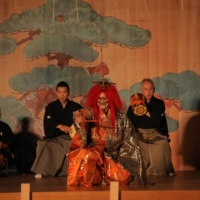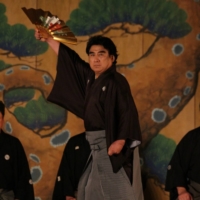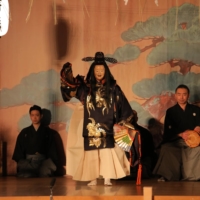“For over a thousand years, noh theater has been consistently expressing a prayer for peace,” said Manjiro Tatsumi, a Hosho School shite-kata (lead actor) and a designated Important Intangible Cultural Property, at the explanatory session of the 18th Tokyo Dai Takigi Noh (Noh by Firelight).
The event was held at the Citizen’s Plaza located in front of the Tokyo Metropolitan Government Building on the evening of Oct. 16. Started in 1998 by the International Foundation for Arts and Culture, it has served as a rare opportunity for people to enjoy the art performed by noh professionals free of charge. Except for 2011, the year of the Great East Japan Earthquake, and between 2015 and 2017 while the Tokyo Metropolitan Government Building underwent repairs, the event had been held every year until 2018. This is the first time the performance has been held since the COVID-19 pandemic.
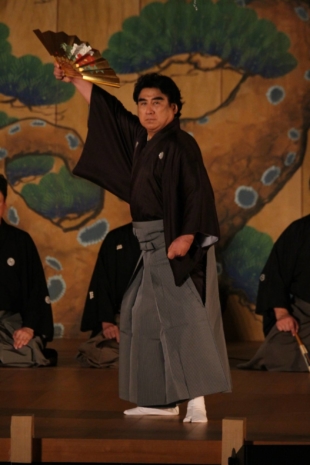
IFAC aims to promote arts, culture and education through supporting and funding various projects internationally. It was founded by Haruhisa Handa, also known as Toshu Fukami, who is a philanthropist, business leader, calligrapher, painter and operatic baritone, as well as a noh actor of the Hosho School and member of the Nohgaku Performers’ Association. He studied noh at Doshisha University’s Hosho Noh Society under the tutelage of Nihei Kashiwabara and Takashi Tatsumi. He was supposed to perform the leading role of “Sagi” (“The Heron”), one of the three performances at this year’s event, but the program was replaced by a different piece because of his recent knee injury.
Despite the change in the program, the audience of about 2,800 enjoyed the event and gave generous applause to all the performers at the end of each performance. The livestream of the event had 16,157 views on YouTube.
Prior to the programs, Tatsumi told the audience how to best enjoy noh and what each performance was about. “Noh is the aesthetics of subtraction,” he said, meaning that the simplicity in noh’s sets and props as well as noh actors’ movements and dialogues is a result of pursuing minimalistic beauty. “The audience is expected to add their own imagination to what they see on the stage,” he said, emphasizing that it is the power of the audience that makes a small and empty stage of noh an infinite space.
Tatsumi’s explanation about the programs helped the audience understand the stories even though noh actors speak in ancient Japanese. On a stage illuminated by torches, the musicians and jiutai (chorus) sat down quietly, and a high shriek from a bamboo flute marked the beginning of the story.
The first performance was “Kasuga Ryujin” (“The Kasuga Dragon God”), a story about a monk who plans to travel abroad and the dragon god who tries to stop him. Myoe Shonin, a monk, who decided to travel to sacred Buddhist sites in China and India, appears on the stage. He has come to visit Kasuga Shrine in Nara to announce his plan. But an old Shinto priest, portrayed by Tatsumi, tries to convince him to continue his Buddhist practice in Japan. Tatsumi had explained prior to the performance that traveling abroad meant risking one’s own life because about one-third of vessels sank during voyages in the Kamakura Period (1185 to 1333), when the story is set. The monk agrees and gives up his trip and the delighted old priest promises to show him the life story of Buddha and disappears. Then, the dragon god, also performed by Tatsumi, appears and presents Buddha’s life story before the eyes of the monk and vanishes into a pond.
The second part of the program was “Shibiri” (“The Inherited Cramp”), a traditional kyogen piece. Just as Tatsumi explained that kyogen is a form of traditional comic theater that often depicts funny and somehow lovable adults, the characters in this short comedy were both witty. The master of a house orders Taro Kaja, performed by Noritoshi Yamamoto, a kyogen-kata (lead comic actor) of the Okura School and a designated Important Intangible Cultural Property, to run an errand to prepare for a sudden visitor. But Kaja refuses to go, saying that he is suffering an attack of his chronic paralysis. The master says: “What a pity. My uncle has invited us to dinner, but you won’t be able to make it.” Kaja replies that he will try to talk sense into his paralysis. The comical dialogue and movements drew laughter from the audience.
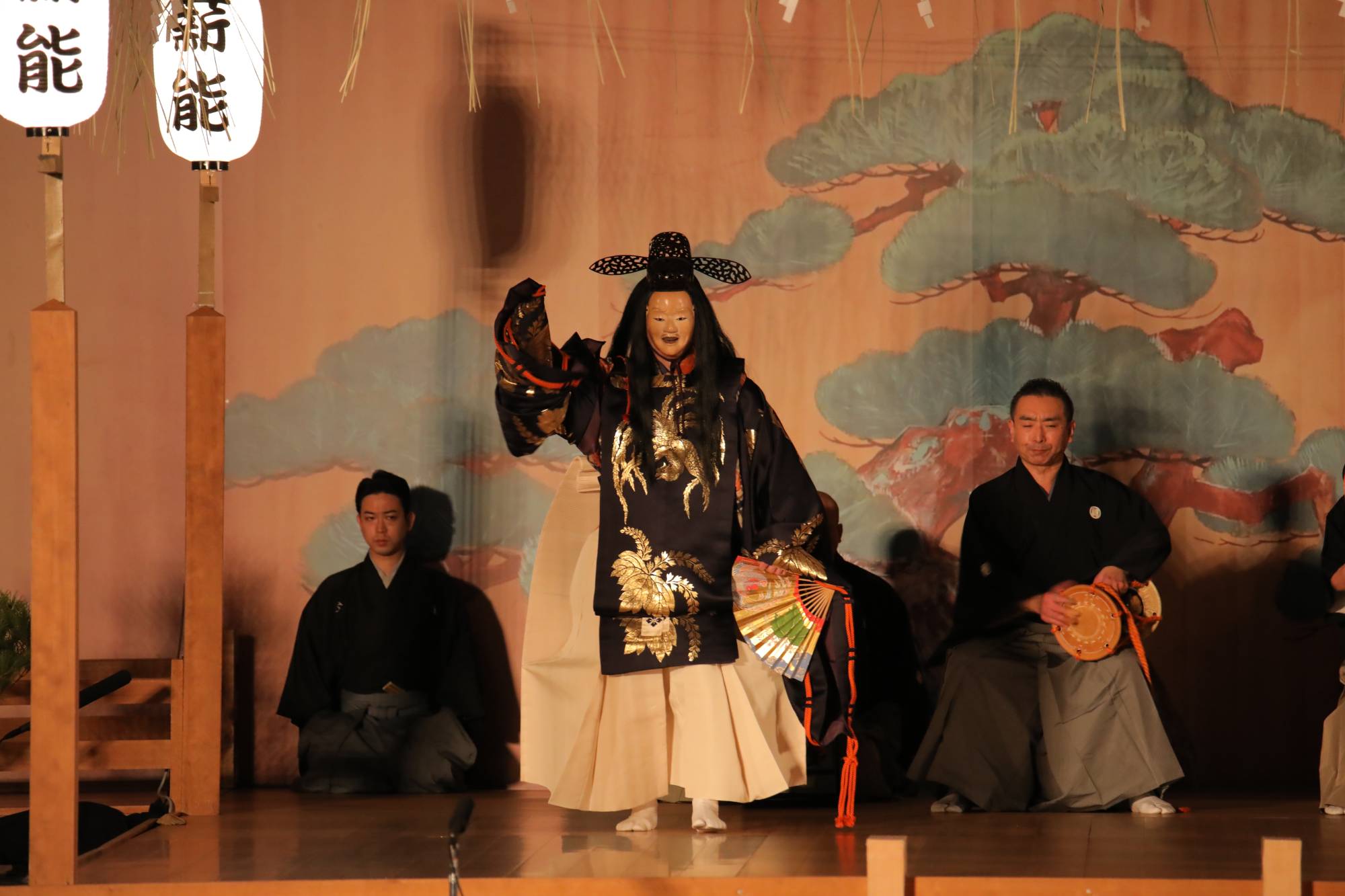
The third performance was “Yoro ‘Shugen’” (“Yoro ‘Celebration’”), a noh play about a waterfall in Gifu Prefecture that is said to have medicinal water. An imperial messenger sets out on a search for the waterfall and runs into two men who know where it is. They take him to the waterfall and the mountain god, performed by Takao Yamauchi, a noh actor who made his stage debut at the age of 7, appears. The event ended with the mountain god’s graceful dance of a prayer for longevity and peace.
The event was supported by the Tokyo Metropolitan Government and the Cultural Affairs Agency.



